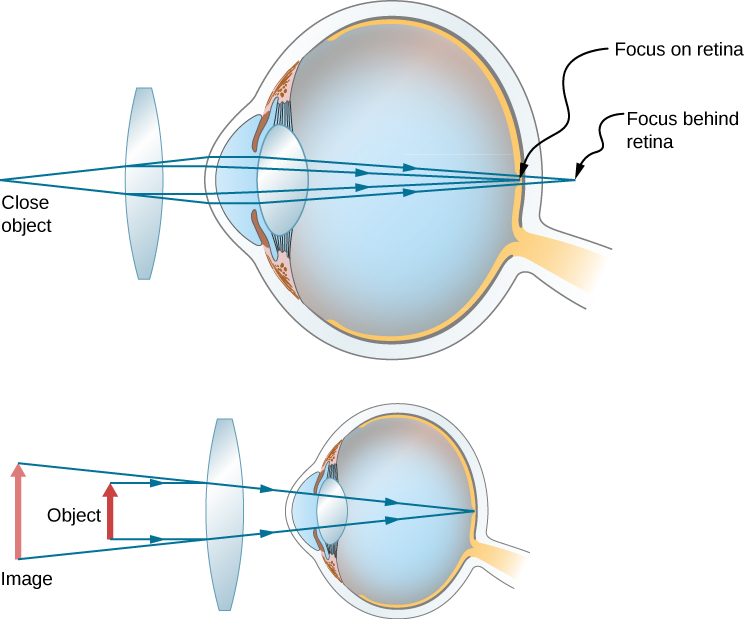| << Chapter < Page | Chapter >> Page > |
Correcting farsightedness consists simply of using the opposite type of lens as for nearsightedness (i.e., a converging lens), as shown in [link] .
Such a lens will produce an image of physical objects that are closer than the near point at a distance that is between the near point and the far point, so that the person can see the image clearly. To determine the optical power needed for correction, you must therefore know the person’s near point, as explained in [link] .

If the lens of a person’s eye is removed because of cataracts (as has been done since ancient times), why would you expect an eyeglass lens of about 16 D to be prescribed?
When laser light is shone into a relaxed normal-vision eye to repair a tear by spot-welding the retina to the back of the eye, the rays entering the eye must be parallel. Why?
A relaxed, normal-vision eye will focus parallel rays of light onto the retina.
Why is your vision so blurry when you open your eyes while swimming under water? How does a face mask enable clear vision?

Notification Switch
Would you like to follow the 'University physics volume 3' conversation and receive update notifications?